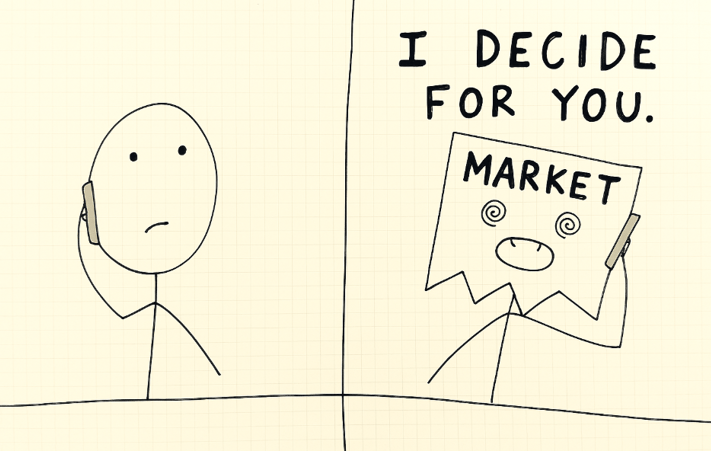The Art of Not Launching (Yet): A Marketing Guide
6/14/20232 min read


You're paralyzed by campaigns. What should come next?
Every marketer knows the feeling: a never-ending decision chain—social vs. search,
brand vs. direct-response, A/B‑test vs. multivariate. But here’s the secret: sometimes, the best tactic is to not make a decision... at least immediately.
Instead of choosing, discover the right direction. And you do that in two unexpected ways:
Technique #1: Over-analyze (and learn)
When you can’t pick a campaign variant, what do you do? You research, benchmark, study analytics. That’s not procrastination—that’s due diligence. As with life‑decisions, it shows you care about making good choices.
In marketing, this looks like:
Deep competitor research
Audience interviews
Data‑driven testing frameworks
Yes—it’s important. But over-research can spiral into paralysis. You might wait “until there’s 100 % confidence,” but in digital marketing, waiting for perfection is the enemy of progress.
“Overthinking shows you care a lot…”
Technique #2: Let the market decide
Ever hesitate to pick a single positioning or channel? Ask the market. Run small pilots on two messages or platforms, and let real-world performance decide—for you.
Think of it as outsourcing the decision:
Go live with Campaign A and B.
Let real metrics—CTR, conversion, engagement—speak.
Double down on the one that proves itself.
This is exactly like letting others choose a restaurant in the original article—except here, the market picks your menu.
Technique #3: Embrace the “cookie moment”
Sometimes the best decisions are small and spontaneous. A team‑wide idea jam, a user‑generated content spark, or an influencer shout‑out that pops up—go with it!
These “cookie moments” are unplanned yet grounded in instinct and context—just like the supermarket cookie choice in Emilie’s articlemedium.com+1medium.com+1. They often lead to unexpected campaign wins or fresh creative inspiration.
Technique #4: Prototype, then commit
Once your test results land, lock in the direction:
Nail down the message
Optimize the creative and landing pages
Set scalable budgets
Don’t constantly flip-flop. A campaign that’s locked and optimized will outperform one lingering in “maybe…” mode. Commitment reduces regrets and amplifies performance.
Bringing it all together: A Marketing Decision Workflow
PhaseWhat to do1. Study & researchBenchmark, survey customers, map the landscape2. Pilot & let data speakRun small tests on different channels/messages3. Lean into instinctDeploy quick wins—email blast, content share, NPD teaser4. Commit & scaleDouble down on winners, refine, and lock in budgets
Why “not deciding” is powerful
Avoids paralysis: Research without action leads nowhere.
Leverages real feedback: Your audience is the best decider.
Accelerates learning: Quick experiments yield faster insights.
Builds momentum: Commitment enables optimization and ROI.
Final thought: Marketing is a living experiment
Just like personal decisions, campaigns aren’t fixed—they evolve. Embrace overanalysis, crowdsourced choice, spontaneous creativity, and firm commitments when needed.
That’s the art of not making a decision… until the market and context guide you to launch, iterate, and win.


You're paralyzed by campaigns. What should come next?
Every marketer knows the feeling: a never-ending decision chain—social vs. search,
brand vs. direct-response, A/B‑test vs. multivariate. But here’s the secret: sometimes, the best tactic is to not make a decision... at least immediately.
Instead of choosing, discover the right direction. And you do that in two unexpected ways:
Technique #1: Over-analyze (and learn)
When you can’t pick a campaign variant, what do you do? You research, benchmark, study analytics. That’s not procrastination—that’s due diligence. As with life‑decisions, it shows you care about making good choices.
In marketing, this looks like:
Deep competitor research
Audience interviews
Data‑driven testing frameworks
Yes—it’s important. But over-research can spiral into paralysis. You might wait “until there’s 100 % confidence,” but in digital marketing, waiting for perfection is the enemy of progress.
“Overthinking shows you care a lot…”
Technique #2: Let the market decide
Ever hesitate to pick a single positioning or channel? Ask the market. Run small pilots on two messages or platforms, and let real-world performance decide—for you.
Think of it as outsourcing the decision:
Go live with Campaign A and B.
Let real metrics—CTR, conversion, engagement—speak.
Double down on the one that proves itself.
This is exactly like letting others choose a restaurant in the original article—except here, the market picks your menu.
Technique #3: Embrace the “cookie moment”
Sometimes the best decisions are small and spontaneous. A team‑wide idea jam, a user‑generated content spark, or an influencer shout‑out that pops up—go with it!
These “cookie moments” are unplanned yet grounded in instinct and context—just like the supermarket cookie choice in Emilie’s articlemedium.com+1medium.com+1. They often lead to unexpected campaign wins or fresh creative inspiration.
Technique #4: Prototype, then commit
Once your test results land, lock in the direction:
Nail down the message
Optimize the creative and landing pages
Set scalable budgets
Don’t constantly flip-flop. A campaign that’s locked and optimized will outperform one lingering in “maybe…” mode. Commitment reduces regrets and amplifies performance.
Bringing it all together: A Marketing Decision Workflow
PhaseWhat to do1. Study & researchBenchmark, survey customers, map the landscape2. Pilot & let data speakRun small tests on different channels/messages3. Lean into instinctDeploy quick wins—email blast, content share, NPD teaser4. Commit & scaleDouble down on winners, refine, and lock in budgets
Why “not deciding” is powerful
Avoids paralysis: Research without action leads nowhere.
Leverages real feedback: Your audience is the best decider.
Accelerates learning: Quick experiments yield faster insights.
Builds momentum: Commitment enables optimization and ROI.
Final thought: Marketing is a living experiment
Just like personal decisions, campaigns aren’t fixed—they evolve. Embrace overanalysis, crowdsourced choice, spontaneous creativity, and firm commitments when needed.
That’s the art of not making a decision… until the market and context guide you to launch, iterate, and win.
Connect
Join our community for the latest updates.
Contact us
contact@enzomedia.com
+34 123-456-789
© 2025. All rights reserved.
